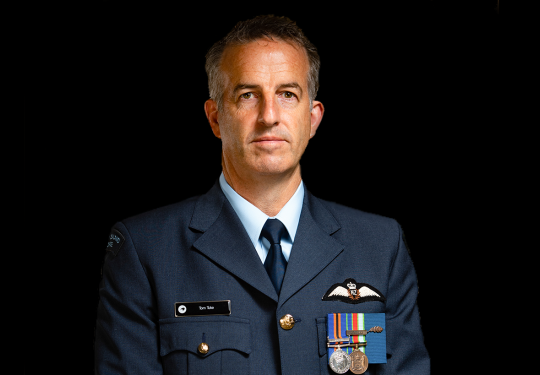Flying into the smoke of the Gulf War
Squadron Leader Tom Tuke
Current role: Flight Commander B757
Length of time in service: First served for 9.5 years and then re-joined the RNZAF in 2016 and has served another 4.5 years.
15 January, 2021
Tom Tuke was a 23-year-old flying officer captaining a C-130 Hercules when he deployed as part of 40 Squadron to the Gulf War. 40 Squadron originally deployed with three crews but this increased to four later on due to the high tempo of flying.
Now a Squadron Leader, he says the first thing that springs to mind about the Gulf was flying into Kuwait Airport just after the coalition forces took back Kuwait from the Iraqis.
“Iraqi troops had set fire to all the oil wells and there was a thick black smoke all around Kuwait City and the airport, extending for a huge area and to altitude.
“Descending into this murk, flying up Kuwait Harbour and then over to the airport whilst the flames from these wells were hundreds of feet high was some sight,” he said.
A highlight of the deployment was operating as a close-knit deployment and crew with international coalition forces.
“The NZDF hadn’t been involved in anything like this for a long time, so for the Kiwis to be there with other international forces, flying, operating in a conflict environment, putting into practice all that we’d trained for, doing the job and being proud of what we achieved was great.
“We operated into a large variety of airfields and desert strips. Combine these with a range of environmental conditions and it made flying interesting and challenging.
“There was also the various loads and personnel we carried which were always changing and throwing up new issues. But as a detachment and more specifically a crew we worked well to find solutions,” Squadron Leader Tuke said.
The dynamic environment and the scale of the forces involved meant 40 Squadron had to continually change plans, adapt and look for solutions.
“This adaptability has carried through for me both personally and in my work. Even now as a Boeing 757 captain I’m sure this trait and experience is well used, whether or not I realise it at the time,” he said.
Operating as a close-knit group of individuals in that environment and in a conflict situation cemented life-long friendships, he said.
“Although at the time we may not have fully comprehended this, but as a group we experienced a significant wartime event. And all these experiences we shared from Scud missile attacks to flying and even the social events shaped us both as individuals and a group.”
